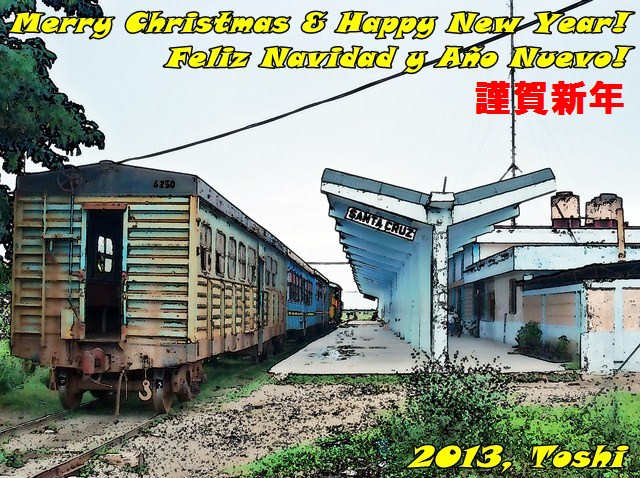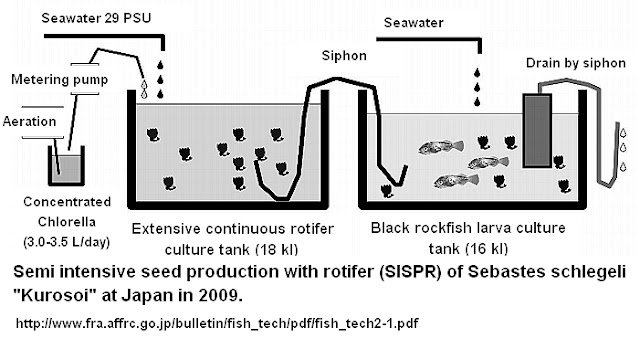Introduction of SISPR (Semi-intensive seed production with rotifer) Masatoshi FUTAGAWA / CORDUNAP September 23, 2012 Recently, the combination of SISP (Semi Intensive Seed Production) and CERC (Continued Extensive Rotifer Culture) improve seed quality, survival and reduced cost with black rockfish (P49-55, 2009) , Pacific cod (2011) and sea bream (2011). The method (SISPR; semi intensive seed production with rotifer) shows that larva culture at harvest tank of CERC with or without enrichment rotifer. The advantages are produced strong larva, grow faster with less work activities compared to intensive method. I recommend the system consisting 2 units of Rotifer tank and Larva tank (10 kl), cylinder type (3.6 diameter, 1 m depth), sea and fresh water supply for Rotifer tanks, sea water supply for Larva tank, heating system for Rotifer tank, air stone (4 units) for both tank. Rotifer culture water is controlled to 28 ̊C and 29 psu by heater, sea and fresh water supp




